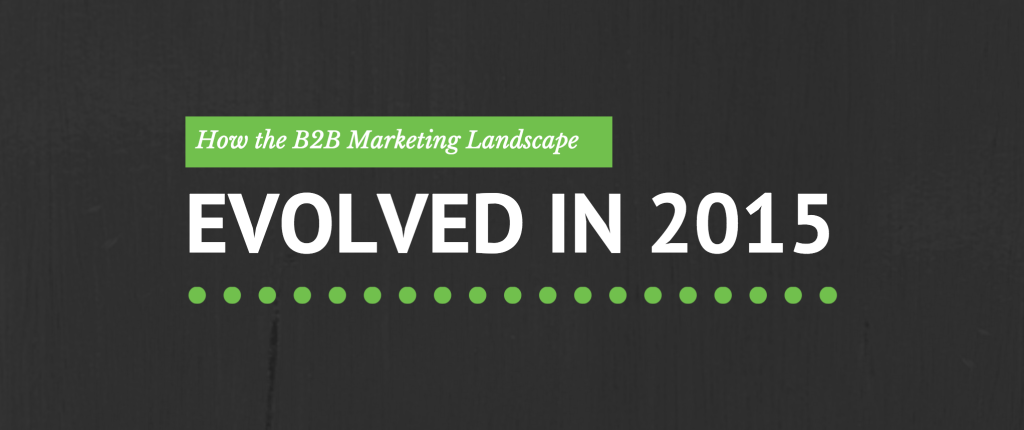As the end of 2015 draws near, we tend to do quite a bit of reflecting on the past year. What worked, what missed the mark, who did a great job, who needs to kick it up a notch, and so on. For a B2B company like Right On Interactive, we tend to spend more time reviewing how our marketplace has changed and what we need to do in the coming year to stay on top of our game. So, in an effort to set some goals for ourselves, we came up with this list of how the B2B marketing landscape evolved in 2015 – and what that means for 2016.
B2B Marketing and the Customer Lifecycle have become more complex than ever. We all know that technology is constantly changing and, as a result, the way brands want to interact with partners has evolved as well. B2B decision makers are influenced not just by their contemporaries but also online reviews through sites like G2 Crowd, comments on social media, availability of interesting materials such as videos and infographics, and the list goes on and on. The result is a maze of social influence and research channels.
In 2016, B2B marketers will need to engage with customers throughout all stages of the customer lifecycle with interesting content via multiple channels and media. To learn more about marketing throughout the customer lifecycle, check out this infographic.
B2B marketing competition is fierce these days! Let’s be honest with ourselves for a minute, B2B clients who are in the early stages of their customer lifecycle with a brand are not interested in speaking with a salesperson. Unlike B2C customers, a “human touch” is unnecessary to them because they are doing the majority of their purchasing research before they ever click to view a demo or schedule a meeting.
In 2016, B2B marketers need to put more emphasis in obtaining positive and detailed online reviews from customer advocates. Brands should also be creating new content specifically geared towards these early stage researchers, not just sharing content generated by another SME.
Social influence has crept into the B2B marketplace… and that’s good! Similar to B2C buyers, B2B decision makers are paying close attention to social media. A social media presence on such channels as Facebook, Twitter and LinkedIn can help a brand build relationships and trust with potential clients.
Next year, B2B brands should include social selling in their social media strategy as a means for building customer engagement. This isn’t just for the brand’s Twitter profile, but for all employees, too. Social media is a critical means for research and discussion. Not to mention, social media offers brands the opportunity to showcase proof their solution works by encouraging customer advocates to share their success via social channels as well as in reviews.
B2B marketing content is highly sought after. In fact, content influences the customer lifecycle. During the research stage for new solutions, B2B decision makers are utilizing search engines, reading blogs and watching brief videos in effort to narrow down their list of companies to consider.
B2B marketers need to continue to create SEO optimized blog content at least three times a week and share it via social channels and email marketing in 2016. Great content that is easy to find is more persuasive to potential new customers than a phone call from a business development representative. Stop cold calling and start writing.
What will you be doing differently in 2016?

